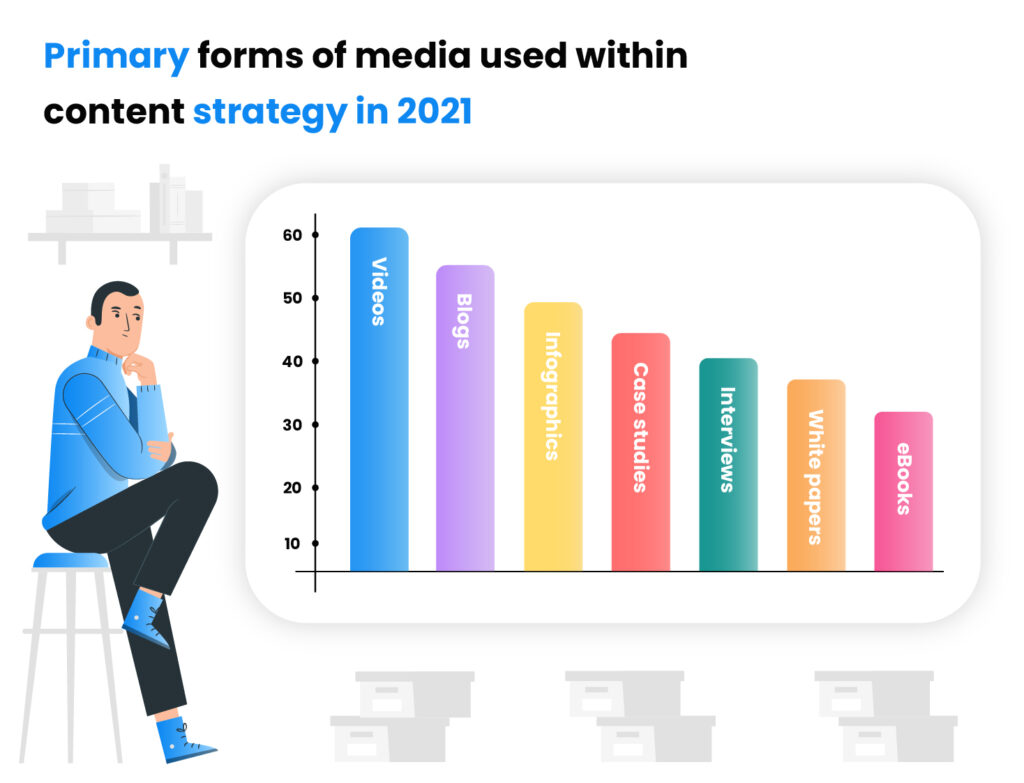Affiliate marketing is booming. If done right, it can help companies reach new customers who are interested in their products or services. By offering the content their target audience needs/wants at the right moment, companies can boost their reputation and revenue for almost no cost.
Affiliate marketers benefit as well. They receive a commission every time a customer makes a purchase via their unique affiliate link that’s placed on their blog or social media account. If done diligently, affiliate marketers can build an effective source of passive income from posting/creating promotional content.
However, the affiliate marketplace is oversaturated, making it harder and harder to stand out from the sea of affiliates. Many affiliates struggle despite investing their time, energy, and effort into their content. In fact, statistics show that over 90% of affiliate marketers end up failing instead of “getting rich”.
To make it big, you need to get through to your target audience, and for that, you need determination, a great deal of creativity, and, most of all, well-written affiliate marketing content. But, how can you write believable affiliate content that will convince your readers to make a purchase via your link? Check out our four tips for creating affiliate marketing content that will help you reach your target audience.
1. Use good focus keywords
If you want people to find your affiliate marketing content when they make a Google search, you need to rank high on Google. This seems like basic knowledge, but it’s also where many marketers fail. Why? Because they spend time and energy creating excellent affiliate content, only for it to bring little or no traffic. The reason? Very often, it’s picking popular, generic, short, and frequently searched for keywords.
Why? There is so much information and content out there surrounding the topic that the competition is fierce. Large companies often spend thousands to ensure they rank high for generic and popular keywords. As a result, outranking them is nearly impossible.

The same companies ignore longer and more specific keywords though, which presents you with a good opportunity. By using long-tail, specific keywords in your affiliate content, you can increase your chances of ranking higher in Google search results, as the competition is weak, or non-existent.
For example, if you are promoting a vitamin supplement, you might try to rank for “multivitamin.” However, the number of search results for this keyword will be enormous. They will probably include different product ads and generic articles about multivitamins. You might find yourself on the 4th page of Google search results or so. But if you use “vitamin supplement for a patient with diabetes,” this will help you rank higher and attract people looking for such a product to your page.
Obviously, you are going to drive less traffic from a long keyword than from a popular, short one. But as a benefit, the traffic you will get will have higher quality, match your target audience, and thus, bring in more sales.
2. Pick the right type of affiliate marketing content
Content is the basis of any affiliate marketing campaign. Whether you use a blog, social media channel, or a newsletter, you need great content to persuade people to try out the product you are recommending. There are various affiliate content types to pick from, including reviews, roundups, tutorials, infographics, and checklists.
Depending on your industry, niche, and the products you sell, some content types might be more suitable than others. A good idea would be to check what type of content your competitors are using in their affiliate marketing strategies. This will help you figure out which kind of content could work best for your product. Looking at which topics generate the most clicks on your blog or social media is also a splendid way to find out your audience’s interest.

Generally, the most popular types of affiliate marketing content are reviews, “how-to” tutorials, and product roundups. For example, SaaS companies typically leverage longer and more detailed reviews, which aligns better with the SaaS SEO tactics, while companies selling physical products invest in creating product roundups.
Why are these three types of content so valuable for affiliate marketing? When reading a review or roundup, most people look for information about how a given product or service can help them solve a problem or complete a task.
They are not interested in reading a long list of features. Instead, they want to know what they can achieve with them. Reviews, tutorials, and roundups give people exactly that. This type of content is filled with information about how people can use a product or service in addition to containing information about the product’s benefits and drawbacks.
Most importantly, reviews or roundups can convince your potential buyers that they are making the right choice by picking one product over another, as this is the product that will be the most useful for them.
3. Structure the content properly
You have surely heard about the famous “goldfish myth” that claims people can only focus for around 8 seconds. The claims were somewhat dubious, but you could find data concerning such research on many websites and it’s still mentioned quite often.
It is true, though, that most people do not have time to read a long wall of text. They skim an article or review the information they need at that specific moment and perhaps read the whole piece later. But if your affiliate content is one big block of text without pictures, headlines, or paragraphs, then searching for little details will be tough.
To make your affiliate content skimmable, a great idea would be to add a short element (perhaps a box) that contains a summary of your opinion about the product. It should mention the main benefits and flaws of the product in addition to a final score. Providing these types of elements enables your audience to extract information from your article without having to read it. For roundups, a clear table comparing all products side by side will work just as well.
Keeping a proper structure of your affiliate marketing content is especially important if the review or roundup is longer. Here’s how a review structure could look like:
- Short introduction (with the name of the product and why you picked it for a review.)
- What the product can be used for.
- A short description of how you used the product.
- Pros and cons of the product.
- Summary of your review and final score, together with an eye-catching call to action button linking to the website where your readers can purchase the product.
Before we move on, let’s talk about links. The tactic of stuffing several affiliate links into your content with the hope that the more links, the higher the chance you’ll get a click stopped working a long time ago. It doesn’t give you better sales, and it also makes you seem like an untrustworthy, pushy seller. The exact opposite of what you are aiming for, right?
Adding affiliate links to all posts and content you create, even if they aren’t connected to the main topic, won’t help you build your reputation or increase conversions. Your main goal is to make readers trust you and believe that what you recommend is worth their time. First, provide value to your audience through content, and then you can try to persuade them to use your affiliate link.
4. Read the terms of affiliate programs closely
Affiliate marketing does give quite a lot of freedom to marketers regarding how they can promote the products or services in question. But many companies have specific requirements or expectations in what context their products should be mentioned, where the affiliate disclaimer should be positioned, or how you can optimize the visuals you’ll be using.
For example, Amazon has a long list of what you can do and what you shouldn’t do as their affiliate. You can’t mention prices in the posts, use shortened links that don’t make it immediately clear that they lead to an Amazon page, nor use Amazon’s images. All pages also need to contain a visible disclaimer that you will earn a small commission for all purchases made through the affiliate link.
Other affiliate programs might have restrictions about where you can source visuals from, how you can mention the brand’s name in your content, or their policies on using specific marketing channels. If you don’t comply with the rules, you might even be banned from the affiliate program in the worst-case scenario.
So before you start promoting a product or service, read the affiliate terms and conditions of the program you want to join. Doing so can save you a lot of unnecessary problems in the long run.

Conclusion
Affiliate marketing can be helpful when it comes to attracting the right people to a promoted product or service. But with lots of affiliate marketing content floating around, writing a vague article and slapping an affiliate link on it will give you little to no results.
To create content that will resonate with your audience and convince them to click the CTA button, you need to find powerful keywords, use the most suitable content type, adjust its structure to your audience’s needs, and stick to the terms of the affiliate program. We hope that with our tips, creating spectacular content for your campaigns will be a little bit easier. Good luck!
Frequently Asked Questions
How do I create an affiliate campaign?
To create an affiliate campaign, you will need to first identify potential affiliates who are relevant to your industry or product. Then, you will need to create a compelling offer or incentive for them to promote your product or service. This could include a commission structure, bonuses, or other perks. Next, you will need to provide affiliates with marketing materials such as banners, links, and promotional content. Finally, you will need to track and monitor the performance of your affiliates to ensure the success of your campaign.
How do i create an affiliate marketing campaign?
To create an affiliate marketing campaign, first, identify your target audience and the products or services you want to promote. Then, find and recruit affiliates who can help promote your products to their audience. Provide them with unique tracking links and promotional materials. Set up a commission structure and track the performance of your affiliates. Finally, continuously optimize and improve your campaign based on the results.
How can I create content for affiliate marketing?
For affiliate marketing content, choose a niche you're passionate about, research your audience, and create valuable content like blog posts, videos, and social media posts promoting affiliate products in a helpful manner. Disclose affiliations and prioritize audience value.
How do I create an affiliate campaign?
To create an affiliate campaign, you will need to first identify potential affiliates who are relevant to your industry or product. Then, you will need to create a compelling offer or incentive for them to promote your product or service. This could include a commission structure, bonuses, or other perks. Next, you will need to provide affiliates with marketing materials such as banners, links, and promotional content. Finally, you will need to track and monitor the performance of your affiliates to ensure the success of your campaign.
How do i create an affiliate marketing campaign?
To create an affiliate marketing campaign, first, identify your target audience and the products or services you want to promote. Then, find and recruit affiliates who can help promote your products to their audience. Provide them with unique tracking links and promotional materials. Set up a commission structure and track the performance of your affiliates. Finally, continuously optimize and improve your campaign based on the results.
How can I create content for affiliate marketing?
For affiliate marketing content, choose a niche you're passionate about, research your audience, and create valuable content like blog posts, videos, and social media posts promoting affiliate products in a helpful manner. Disclose affiliations and prioritize audience value.
Share this article
How To Find Affiliates to Sell Your Products
Discover over 10 successful strategies for finding high-quality affiliates in 2024 to boost your product sales. Learn to leverage influencers, join affiliate networks, and enhance your reach through SEO and social media. Maximize revenue with transparency and ongoing monitoring in your affiliate marketing program.
Affiliate marketing email templates
Discover expertly crafted email templates for affiliate marketing with Post Affiliate Pro. Enhance your communication by motivating, acknowledging, and engaging affiliates effectively. From terms and conditions to product launches, these templates ensure clear and consistent messaging to boost your affiliate program's success. Visit now to streamline your affiliate communication!
9 affiliate marketing tools that’ll help you run your affiliate program
Discover 9 essential tools to supercharge your affiliate marketing program! From visual content creation with Visme to comprehensive management with Post Affiliate Pro and audience insights via Smartlook, these tools will boost your sales and refine your strategy. Dive in to maximize your affiliate success!
Post Affiliate Pro recognized as a Category Leader by SourceForge
Post Affiliate Pro named Category Leader by SourceForge for its powerful affiliate features, top user reviews & 24/7 support. Try it now!










